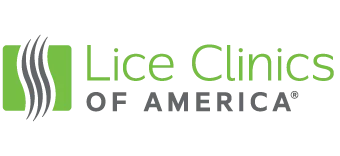A STEP-BY-STEP GUIDE TO CHECKING FOR LICE
Lice.
Nobody wants to have lice. Nobody wants their children to have lice.
So how do you check for lice? How do you confirm that your child has an active infestation that needs to be immediately treated?
Misdiagnosis is Common
It may be surprising to realize that it is common to misdiagnose lice. It is even common for doctors and nurses to misdiagnose a lice infestation.
One study had 614 submissions of evidence for lice. Physical evidence for the infestation was sent in and evaluated. From all of those submissions, 41% had nothing at all to do with lice. Additionally, about half of the remaining submissions did not seem to prove an active infestation.
That is to say, most of the submissions were not evidence of active lice infestation at all. No treatment was necessary.
It would be tough to give a definitive answer for why misdiagnosis is so common, but the extreme aversion to lice probably plays a significant role. We, as a society, seem to be so spooked by lice that almost anything small in your hair will make your head itch. Just reading an article like this might make your head itch!
The thing is, lice don’t need to be so spooky. They don’t cause disease and they are actually pretty easy to deal with if you take care of the lice and nits (eggs) with the proper treatment (more on this treatment at the end).
Take a deep breath and spend the time to follow this step-by-step guide in order to check for lice. Proper and effective treatment starts with an accurate diagnosis so take your time!
Step-By-Step Guide
Before getting to the actual steps involved in checking for lice it is important to establish what counts as an infestation. The CDC states that the gold standard for diagnosing an active infestation is by finding a living louse (adult) or nymph (young louse). The article states, “The diagnosis of head lice infestation is best made by finding a live nymph or adult louse on the scalp or hair of a person.” The article goes on to say that even finding eggs does not confirm an infestation, “finding nits attached firmly within ¼ inch of the base of hair shafts suggests, but does not confirm, the person is infested.”
First, as mentioned previously, take a deep breath and remember that lice are not the end of the world. If you do find evidence of an active infestation, it can be dealt with quickly, painlessly, and without much trouble at all. So approach this guide with calm and your diagnosis will be more accurate.
Second, go to the store and buy a louse comb if you don’t already have one. I know that it will take time to get this specialized comb, but refer again to step one and remember that lice don’t need to be so scary! You can afford the time it takes to get this tool.

Third, get the hair of whoever is going to be inspected wet. You can have them take a shower and use conditioner or you can just get the hair wet. It is also possible to inspect for lice with dry hair, but wet hair makes it easier.
Fourth, be sure to sit in a well lit area and carefully comb through all sections of hair. Start with the comb at the scalp and slowly pull the comb through the hair from the scalp to the end of the hair. The special lice combs have teeth that are close enough together that they will catch eggs or live lice so that you can see them. Watch carefully as you pull the comb through.
Check over the whole head for live lice and nits. It is common to find nits along the nape of the neck and behind the ears, but they can be anywhere. Don’t forget to check eyebrows and eyelashes too.
Fifth, be sure that you know what you are looking for. Dandruff, scabs, and other things that can be in hair are often confused for lice or nits. Click here for pictures of what to look for.
What to do next
If you don’t find evidence of an infestation…whew! You may want to check again in a couple of days just to be sure that you didn’t miss anything the first time around. Another option is to join us at our clinic for a professional head check. We will be able to quickly diagnose if you do have lice and treat you
If you do find evidence for an infestation, there is an easy solution. The Lice Clinics of America have a quick, painless, and chemical free treatment that kills both lice and nits. It’s simple and effective. Your infestation will be over before you know it!
We can help with any questions, concerns, or treatments. Call with any questions.
(281) 783-4598
About Lice Clinics of America – Kingwood
LCA Kingwood has one goal in mind: to give parents and family the safest, most complete and effective head-lice treatment available allowing you to be lice free.
Our lice treatment is FDA-cleared and formulated (with no toxic chemicals) to get rid of lice every time, for every person, with just one treatment. We guarantee it.
Lice Clinics of America – Kingwood
2330 Timber Shadow Drive, Kingwood, TX 77339
LiceClinicsKingwood.com
We recognize our Friends at Lice Clinics of America – Temecula who created this original post.






 CENTERS FOR DISEASE CONTROL AND PREVENTION
CENTERS FOR DISEASE CONTROL AND PREVENTION










